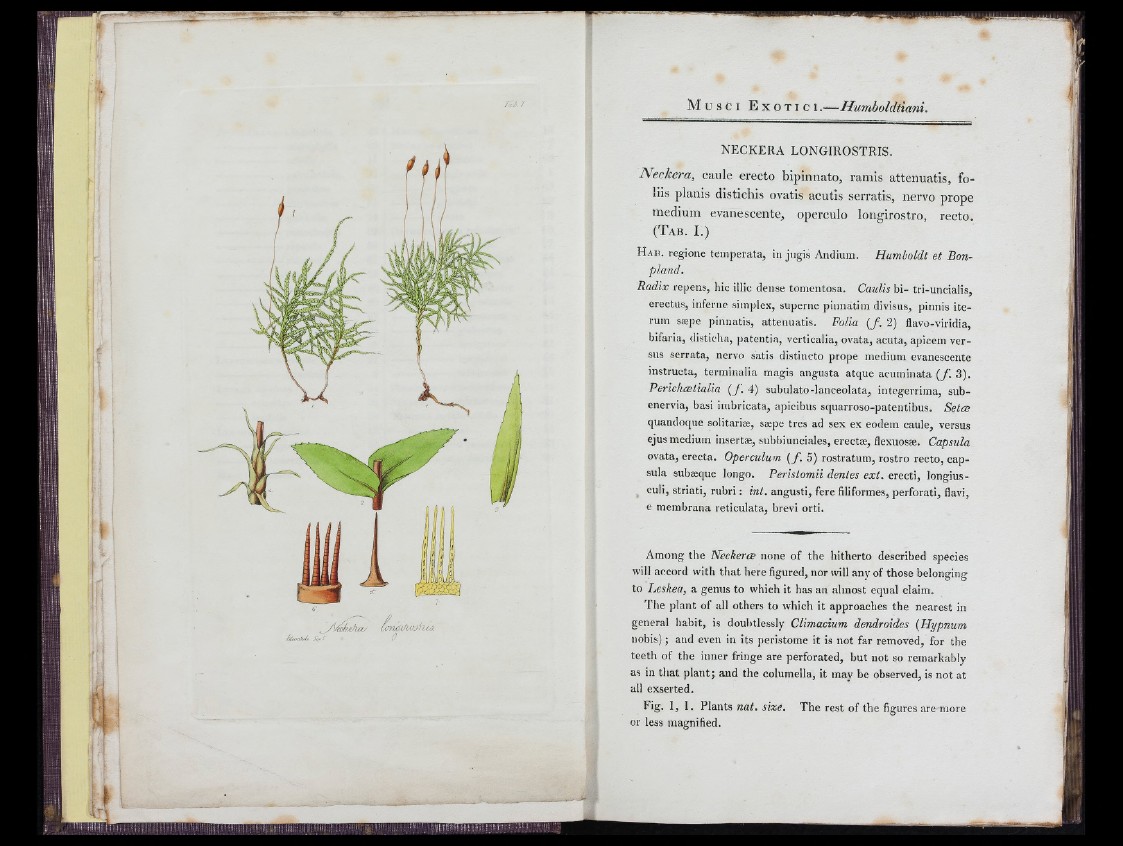
Lcn/jiA<uhjj.
NECKERA LONGIROSTRIS.
N e c k e r a , c aule e re c to b ip in n a to , ram is a tte n u a tis , fo-
liis p lan is d ls tich is ovatis a c u tis s e rra tis, n e rv o p ro p e
m e d ium e v an e sc en te , o p ercu lo lo n g iro s tro , re c to .
(T a b . I .)
Hab. regione temperata, in jugis Andiuin. Humboldt et Bon-
pland.
Radix repens, hic illie dense tomentosa. Caulis bi- tri-uncialis,
erectus, infenie simplex, superne pinnatim divisus, pinnis ite-
rum s»pe pinnatis, attenuatis. Folla ( / . 2) flavo-viridia,
bifaria, disticha, patentia, verticalia, ovata, acuta, apicem versus
serrata, nervo satis distincto prope medium evanescente
instructa, terminaba magis angusta atque acuminata [ f . 3).
PerìchwlìaUm ( / . 4) subulato-lanceolata, integerrima, sub-
enervia, basi imbricata, apicibus squarroso-patentibus. Selce
quandoque solitarias, saepe tres ad sex ex eodem caule, versus
ejus medium inserta;, subbiunciales, erectas, flexuosae. Capsula
ovata, erecta. Operculum { f . 5) rostratum, rostro recto, capsula
subaeque longo. Perìslomii denies ext. erecti, longius-
culi, striati, rubri : ini. angusti, fere filiformes, perforati, flavi,
e membrana reticulata, brevi orti.
Among the Neckerce none of the hitherto described species
will accord with that here figured, nor will any of those belonging
to Leskea, a genus to which it has an almost equal claim.
The plant of all others to which it approaches the nearest in
general habit, is doubtlessly Climacium dendroides {Hypnum
nobis) ; and even in its peristome it is not far removed, for the
teeth of the inner fringe are perforated, but not so remarkably
as in that plant; and the columella, it may be observed, is not at
all exserted.
Fig. 1, 1. Plants nat. size. The rest of the figures are more
or less magnified.
. ( I
A''ti